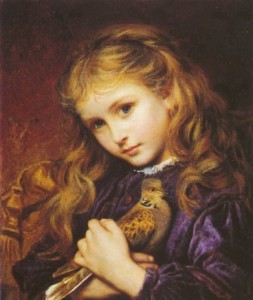Ianuaria, Celtic Goddess of Music
Her name sounds like “January,” and this Celtic goddess may well have been syncretized with the Roman god Janus after whom the month is named. Her shrine was located near Beire-le-Chatel in Burgundy, France.Richard Stillwell notes that the sanctuary’s “Walls were razed,” which is another way of saying that the Christians were particularly thorough in their destruction of this temple complex. From the multiple pieces of statues among the rubble, it looks like many deities were worshiped, and that the walls were erected to partition outdoor shrines.There are two intact inscriptions, one to Ianauria and another to the Matrones. Ianauria’s dedication depicts a curly-haired child playing the pipes. Votive offerings to a Celtic equivalent of the Roman god Mars were often statues of children holding doves. The Celtic Mars deity is unrelated to the martial aspect of Roman Mars, and could possibly be related to Mars as a nurturing bird deity. See my earlier article on Mars as the Roman woodpecker god.There were at least four large doves at the Beire-le-Chatel complex. The Celts, like the people in the pre-Indo-European cultures they assimilated, were primarily animal worshipers, with anthropomorphism of animal deities a by-product of Greco-Roman influence. Continental Celts probably worshiped a dove deity that became romanized as Mars or a feminine version of Janus. Since Turtledoves are usually conceptualized in pairs, it’s interesting that the god Mars is the father of twins and Janus has two faces. Note from the video below that the simple turr turr turr of the Turtledove would be easy to replicate on even a primitive flute.SourcesGreen, Miranda. Animals in Celtic Life and Myth. London: Routledge, 1992.Stillwell, Richard. The Princeton Encylopedia of Classical Sites. Princeton, NJ: Princeton University Press, 1976. Accessed at http://www.perseus.tufts.edu/hopper/text?doc=Perseus:text:1999.04.0006:entry=beire-le-chatel

